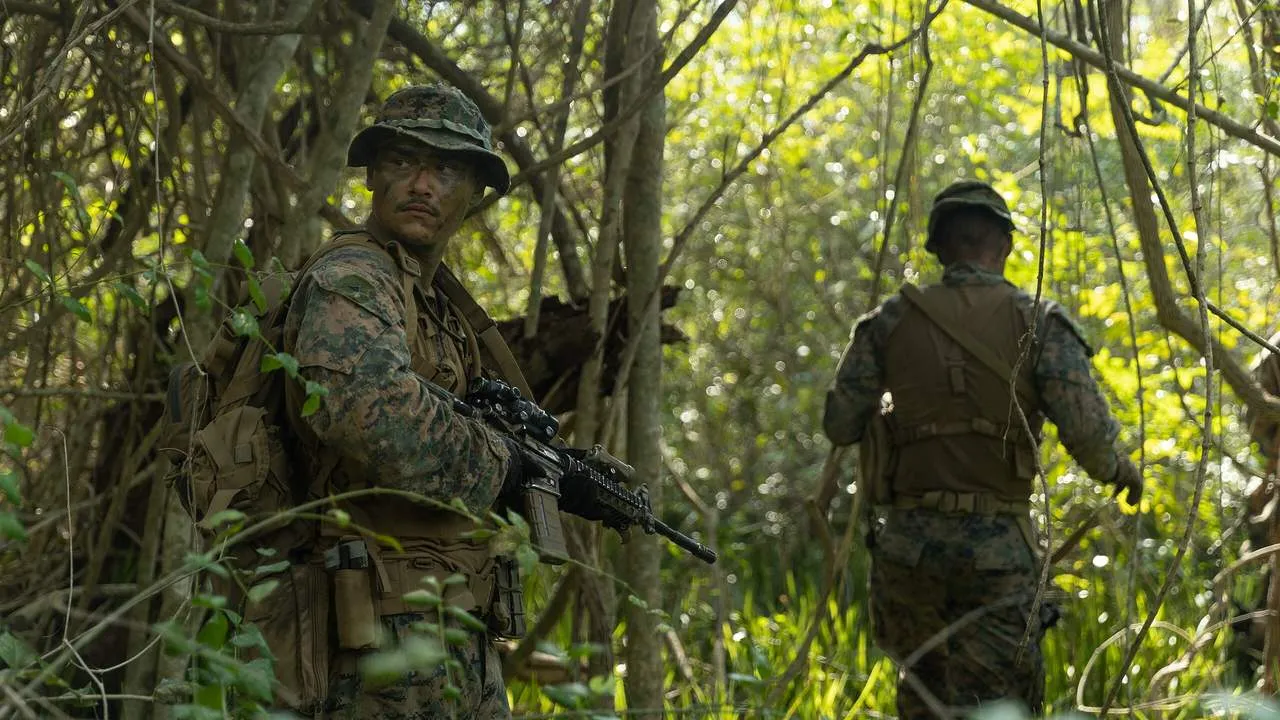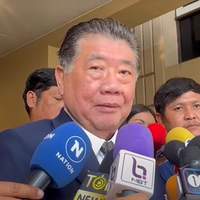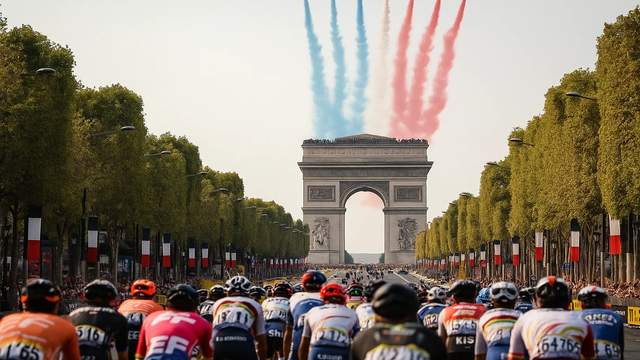Cambodia-Thailand Border Clashes Spark War Fears and Travel Warnings

Fighting has erupted along the Thailand-Cambodia border in the worst clashes in a decade, leaving civilians dead and displacing thousands. As heavy weapons pound contested areas, tourism officials urge travelers to avoid border regions.
Border Clashes Erupt After Simmering Tensions
 The long-running border dispute between Thailand and Cambodia exploded into deadly violence this week, as clashes broke out on Thursday and continued into Friday. Heavy exchanges of gunfire, artillery shelling, and rocket fire have been reported along multiple points of the frontier. Thai officials say these are the bloodiest military clashes between the two neighbors in over a decade. Thailand’s acting prime minister, Phumtham Wechayachai, warned that the confrontation “is escalating and could develop to the stage of war” if not contained, though he stressed that Thai forces are currently focused on defending their territory. Both governments accuse each other of firing first in the initial skirmishes that erupted early on July 24, which rapidly spiraled into broader fighting.
The long-running border dispute between Thailand and Cambodia exploded into deadly violence this week, as clashes broke out on Thursday and continued into Friday. Heavy exchanges of gunfire, artillery shelling, and rocket fire have been reported along multiple points of the frontier. Thai officials say these are the bloodiest military clashes between the two neighbors in over a decade. Thailand’s acting prime minister, Phumtham Wechayachai, warned that the confrontation “is escalating and could develop to the stage of war” if not contained, though he stressed that Thai forces are currently focused on defending their territory. Both governments accuse each other of firing first in the initial skirmishes that erupted early on July 24, which rapidly spiraled into broader fighting.
By Friday, combat had spread to about a dozen locations along the 800-kilometer border. Thailand’s military confirmed it launched airstrikes against what it described as Cambodian military targets, marking a major escalation in the conflict. Cambodian forces, for their part, have been firing long-range BM-21 “Grad” rockets and heavy artillery across the border. Thai authorities condemned what they called “barbaric” attacks on civilian areas, while Cambodian leaders in turn denounced Thailand’s air raids as an unprovoked aggression. The fierce battles raging across border districts represent the worst fighting seen since a similar flare-up in 2011, stirring grave concerns that the situation could tip into an all-out war.
Civilians Caught in the Crossfire
The human toll of the clashes has been mounting quickly. As of Friday evening, Thai officials report at least 15 Thai nationals have been killed – 14 of them civilians – including an 8-year-old boy. Another Thai soldier was also killed in action. On the Cambodian side, local authorities in Oddar Meanchey province said at least one Cambodian civilian is dead and several more wounded. Dozens of people have been injured in total on both sides of the border since the fighting began.
Caught in the crossfire, tens of thousands of villagers have fled their homes. Thai authorities evacuated more than 130,000 residents from four border provinces as a precaution, setting up nearly 300 temporary shelters in schools, temples and community halls. In Cambodia, officials say thousands of people from border communities have also been displaced by Thai retaliatory strikes. “We are scared because they began shooting again at about 6:00 am,” one Cambodian villager told local media as his family hurried to a safe area at a nearby monastery.
The violence has not spared civilian infrastructure. In Thailand’s Surin province, a district hospital was struck by artillery fire on Thursday, causing significant damage. Medical staff scrambled to evacuate patients after shells landed on the hospital campus. Thai officials blasted the incident as evidence that Cambodian forces were indiscriminately targeting civilian sites. Cambodian sources, meanwhile, have accused Thailand of shelling villages on their side of the border and conducting airstrikes that have endangered civilians. Both governments insist their own military actions are “defensive” and aimed only at hostile targets, but the spread of clashes into populated areas has put ordinary people directly in harm’s way.
By the second day of fighting, some border towns were described as virtual ghost towns. In Thailand’s eastern Sa Kaeo province – normally a bustling gateway for trade and travel – the streets of Aranyaprathet district emptied as residents took shelter from incoming fire. Across the border, Cambodian border towns like Samraong have also seen residents stream out to safer inland areas. Schools on both sides have been closed within the conflict zones, and Thai provincial authorities in places like Surin and Ubon Ratchathani have ordered urgent evacuations and set up bunkers for those unable to leave.
Decades-Old Dispute Ignites Again
This sudden eruption of violence comes after months of rising tension over a long-standing border disagreement. The frontier between Thailand and Cambodia has never been fully demarcated to the satisfaction of both nations, stemming from an old French colonial-era map drawn in 1907. Over the decades, patches of territory along the border – including areas around ancient temples and villages – have been claimed by both countries. The most notorious flashpoint is the area around the 1,000-year-old Preah Vihear temple, which the International Court of Justice awarded to Cambodia in 1962. Thai nationalists have bitterly disputed that ruling for years. As recently as 2008–2011, Thai and Cambodian troops fought sporadic battles near the temple and other contested border sites, clashes that killed around 20 people and displaced thousands before a uneasy truce took hold.
Those historical animosities never fully went away, and nationalist sentiment has continued to smolder. The current crisis was sparked in May 2025, when a firefight erupted between Thai and Cambodian patrols in a disputed border area. Each side blamed the other for encroaching; when the dust settled, one Cambodian soldier was dead. That incident set off a chain reaction of recriminations. Thailand tightened controls at crossings and checkpoints along the frontier, while Cambodia retaliated with its own measures – banning imports of Thai agricultural products, blocking Thai media broadcasts, and even throttling internet connections coming from Thailand. Diplomatic relations grew increasingly frosty as both governments traded accusations.
Tensions escalated further just days ago. Last week and again on Wednesday, Thai soldiers on patrol were maimed by landmine explosions in border jungles. Thai commanders alleged the mines had been freshly planted by Cambodian forces – an accusation Cambodia vehemently denied, noting that old minefields from past wars still dot the frontier. Nonetheless, Thailand’s government reacted sharply: on July 23 it recalled its ambassador from Phnom Penh and expelled the Cambodian ambassador from Bangkok in protest. Cambodia responded by downgrading its diplomatic ties with Thailand to the lowest level and pulling staff from its Bangkok embassy. The stage was set for confrontation.
When gunfire and explosions then erupted at dawn on July 24, it marked the first major combat of this border dispute. Both sides claim the other fired first, but however it began, the clash rapidly spread and intensified. Thai officials say Cambodian units began bombarding Thai border posts and villages with rockets and artillery, forcing them to respond in kind. Cambodian leaders, including Prime Minister Hun Manet, have accused Thailand of launching a “premeditated military aggression” by sending fighter jets and drones to strike targets inside Cambodia. With each provocation and counterstrike, the conflict has quickly snowballed, fueled in part by fervent patriotic rhetoric in both countries.
Political dynamics within each nation may be adding fuel to the fire. In Cambodia, longtime ruler Hun Sen – who handed power to his son Hun Manet in 2023 but remains an influential figure as president of the senate – has a history of leveraging nationalist passions during disputes with Thailand. Analysts suspect the veteran strongman may see this standoff as an opportunity to rally domestic support and bolster his son’s standing. On the Thai side, the government in Bangkok is in a fragile state. Prime Minister Paetongtarn Shinawatra, who took office last year, was suspended from her duties on July 1 amid an uproar over her handling of the border tensions. A leaked phone call had emerged in which Paetongtarn addressed Cambodia’s Hun Sen familiarly as “uncle” and appeared to downplay Thai military leaders’ concerns – a scandal that outraged Thai nationalists and the powerful army establishment. She was accused of being too soft on Cambodia, and protests erupted demanding a tougher stance. The political crisis led to Paetongtarn’s temporary removal and the appointment of an acting prime minister. Observers note that both governments’ domestic pressures have created an atmosphere where compromise is difficult, and taking a hard line against the “enemy” next door is politically expedient.
Tourism Feels the Impact
Thailand’s vital tourism industry is bracing for fallout from the conflict, especially in areas near the Cambodian border. The Ministry of Tourism and Sports in Bangkok has issued warnings to travelers to avoid the immediate border regions where fighting is ongoing. In an advisory this week, authorities “strongly discouraged” tourist visits to certain districts across seven eastern and northeastern provinces. These include parts of Ubon Ratchathani, Sisaket, Surin, Buriram, Sa Kaeo, Chanthaburi and Trat provinces – basically all provinces that share a frontier with Cambodia. Several popular sightseeing spots within those areas have been temporarily closed due to security concerns. For instance, the historic temple ruins of Prasat Ta Muen Thom in Surin (right on the border) are now off-limits, after nearby clashes. The Thai side of the Preah Vihear temple site (known as Khao Phra Wihan National Park) in Sisaket has also been shut to visitors as a precaution. And in Ubon Ratchathani’s border district of Nam Yuen, the scenic Phu Chong-Na Yoi National Park has been closed after stray rockets were reported landing in the vicinity.
Local tourism offices report a wave of hotel and tour booking cancellations in border-adjacent towns. “Front-line areas are now largely devoid of visitors,” an official in Sa Kaeo province said, noting that popular markets and casinos around the Aranyaprathet-Poipet land crossing have fallen silent. In safer parts of Sa Kaeo further from the fighting, events are continuing as normal, but the border districts are effectively on lockdown. Similarly in Surin, planned cultural festivals have been postponed in the wake of the violence. Airlines have not suspended any major routes – the affected areas are served mostly by domestic flights – but some bus services and train lines heading to the border have been temporarily halted. Crucially, Thailand announced the complete closure of all its land border checkpoints with Cambodia on Thursday until further notice, severing the usual flow of tourists who travel overland between the two countries. Travelers who had hoped to cross from Thailand into Cambodia (for example, en route to Siem Reap or Phnom Penh) are being told to find alternate plans or delay their trips.
Travel advisories are now coming from abroad as well. Several foreign embassies in Thailand have alerted their citizens about the hostilities. The Indian Embassy in Bangkok, for instance, issued a notice urging Indians to “avoid non-essential travel” to border areas and to stay updated via official channels. It highlighted the Thai tourism authority’s list of restricted zones and recommended that any Indians already in those provinces relocate to safer regions for now. Other countries’ diplomatic missions – including the United States, United Kingdom, Australia, and Singapore – have similarly advised heightened caution and specifically warned against visiting border provinces until the situation stabilizes. Tour operators catering to international tourists have started adjusting their itineraries, scrapping excursions to Cambodian border sites and instead focusing on attractions well away from the conflict zone.
It’s important to note that Thailand’s main tourist destinations – from Bangkok and Chiang Mai to the beach resorts of Phuket, Pattaya, and Krabi – are far from the conflict areas and remain unaffected in terms of safety. No fighting has been reported beyond the localized border hotspots. However, the escalation has rattled nerves in the tourism sector. Industry analysts worry that if the “war” headlines persist, some travelers might reconsider trips to Thailand or Cambodia in the near term. The Ministry of Tourism is emphasizing that the unrest is confined to remote border districts, and that travel to the rest of Thailand continues as normal. Still, they have put local authorities on alert to assist any tourists displaced or inconvenienced by the border conflict, and to provide up-to-date information in multiple languages. For now, the advice for international visitors is clear: avoid the border conflict zones, heed official updates, and exercise caution if traveling anywhere near the Thai-Cambodian frontier.
International Pleas and a Diplomatic Standoff
The flare-up has drawn alarmed reactions from around the globe, with many countries urging Thailand and Cambodia to step back from open war. The United Nations Security Council scheduled an emergency closed-door meeting on Friday in New York to discuss the crisis at Cambodia’s request. Prime Minister Hun Manet in Phnom Penh implored the UN to intervene, accusing Thailand of “premeditated military aggression” and violation of Cambodia’s sovereignty. Bangkok, on the other hand, has thus far resisted outside mediation. “We don’t need third-party mediation yet,” a Thai foreign ministry spokesman said, insisting that the conflict can be resolved bilaterally once Cambodia “ceases its attacks.”
Several of Thailand’s and Cambodia’s neighbors have offered to help defuse tensions. Malaysia’s Prime Minister Anwar Ibrahim, in his capacity as the current chair of the Association of Southeast Asian Nations (ASEAN), has been on the phone with both sides urging an immediate ceasefire. Indonesia and Vietnam have also called on their fellow ASEAN members to exercise restraint and seek dialogue, mindful that a wider conflict could destabilize the region. The ASEAN bloc has a treaty obliging members to peaceful conflict resolution, but its ability to enforce harmony is limited. For now, the group’s role is confined to behind-the-scenes diplomacy and public appeals for calm.
World powers are watching the situation nervously. The United States, China, and France – all of which have strategic interests in Southeast Asia – have each voiced deep concern and urged an end to the fighting. The U.S. State Department released a statement saying it is “gravely concerned” by the escalating violence and the risk to civilians, and it called on both militaries to pull back. China, a close ally of Cambodia but also on good terms with Thailand, has offered to facilitate talks if requested. The European Union likewise appealed for an immediate halt to hostilities. Despite these international calls, the guns have not yet fallen silent. With neither Bangkok nor Phnom Penh eager to be seen as backing down, the prospects of outside mediation gaining traction remain uncertain.
As the second day of clashes draws to a close, there is cautious hope that cooler heads will prevail before the conflict worsens. Late on Friday, military representatives from Thailand and Cambodia were reportedly establishing contact through existing border liaison channels to negotiate localized ceasefires in the hardest-hit areas. Whether those efforts can halt the violence in the coming days is still unclear. In the meantime, both nations are bolstering their troops along the frontier and bracing for what might come next. The world, and worried tourists, will be watching closely. For now, international travelers are advised to stay well away from the affected border zones and keep informed through official travel advisories. The hope among many is that diplomacy can regain the upper hand, averting a deeper war and allowing Thailand and Cambodia to return their focus from battlefields back to the business of welcoming visitors and sustaining the peace that both peoples undoubtedly prefer.




